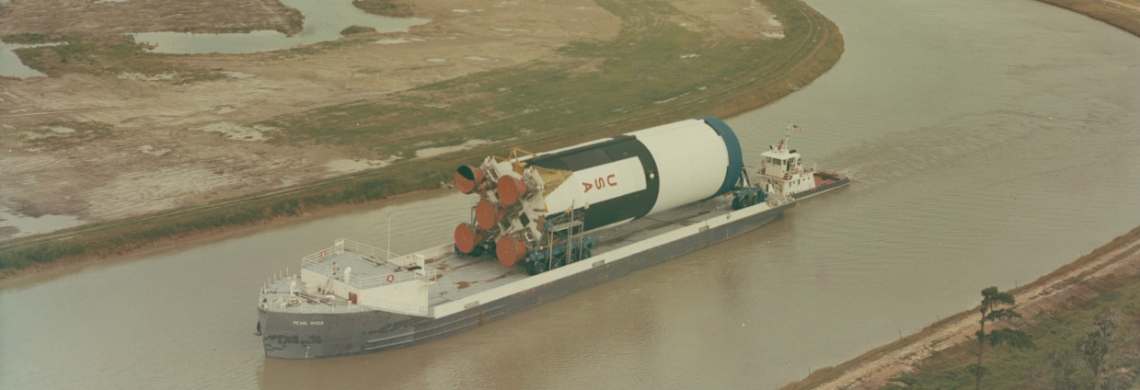On July 20, 1969, astronaut Neil Armstrong stepped onto the lunar surface and became the first human to set foot on something that wasn’t Earth.
But humanity’s voyage to the moon did not begin with Armstrong. Years of planning, experimenting, and development took place in NASA installations throughout the United States, but with Mission Control in Houston and the launch site in Florida, few may realize that the journey to the moon and back passed right through the Gulf Coast.
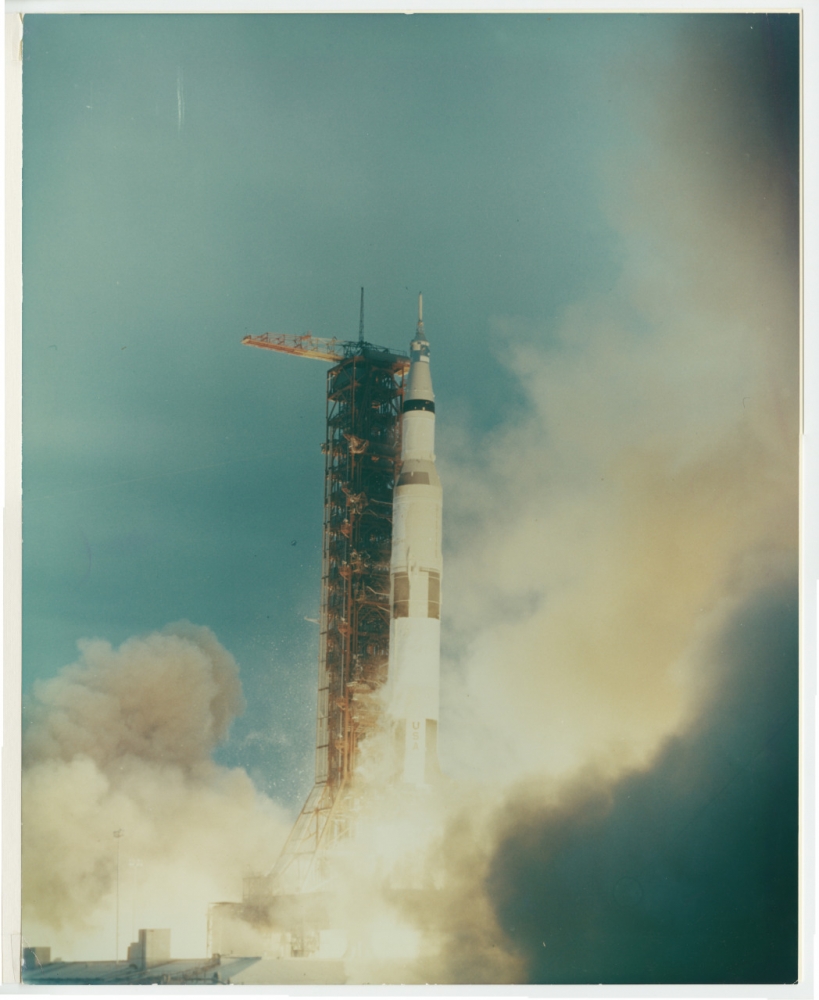
A 1969 image shows the Saturn V rocket just after ignition. The boosters were built in New Orleans and tested in Hancock County, Mississippi. (THNOC, 1974.25.13.263)
Two important facilities in New Orleans and on the Mississippi Gulf Coast manufactured the rocket engines and tested them before they were shipped to Florida to be blasted off the launchpad at Cape Canaveral.
It all started on December 15, 1961, when NASA awarded Boeing the contract to build the first stage of the Saturn V rocket, which would be used on the Apollo missions to the moon. The facility chosen to build the crucial boosters was a former World War II plant in eastern New Orleans. The site had previously been the sugar plantation of Antoine Michoud in the 19th century, and in 1965 it formally adopted the name Michoud Assembly Facility.
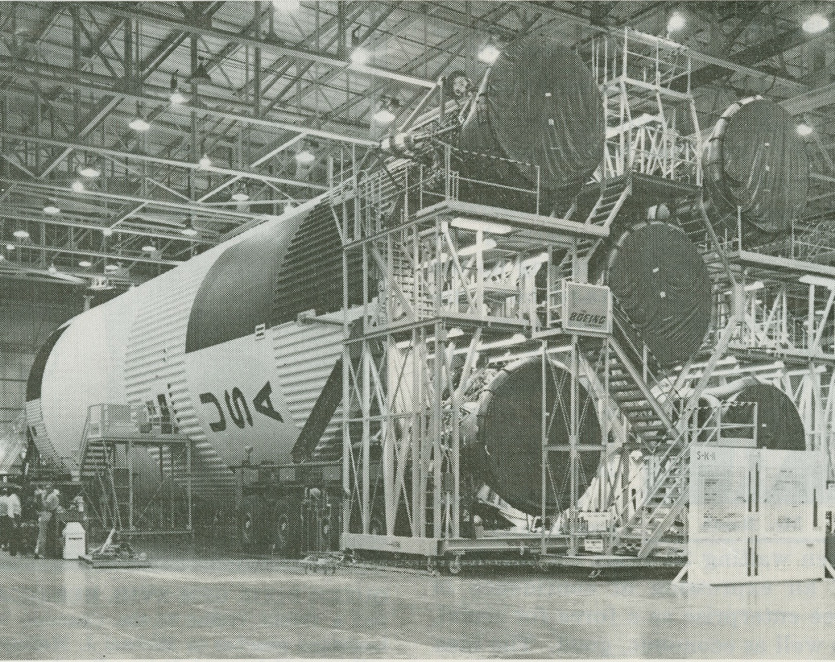
An image from a Chamber of Commerce newsletter shows the Saturn V rocket boosters under construction at the Michoud Assembly Facility in New Orleans. (THNOC, 1974.25.13.173)
According to a 1969 Chamber of Commerce newsletter that highlighted Boeing’s activity in New Orleans, the rocket stage manufactured at the local facility propelled the Saturn V for the first two-and-a-half minutes of flight. It carried a payload of more than 3,000 tons that extended to the height of a 36-story building. The same article noted that of the 4,000 employees working on the project, roughly 80 percent were from New Orleans.
After the team at Michoud manufactured the first stage of the rocket, barges conveyed it to a testing facility in Hancock County, Mississippi. The boosters were transported up the Pearl River, then down a new canal that led to the test site, which is now called the John C. Stennis Space Center.
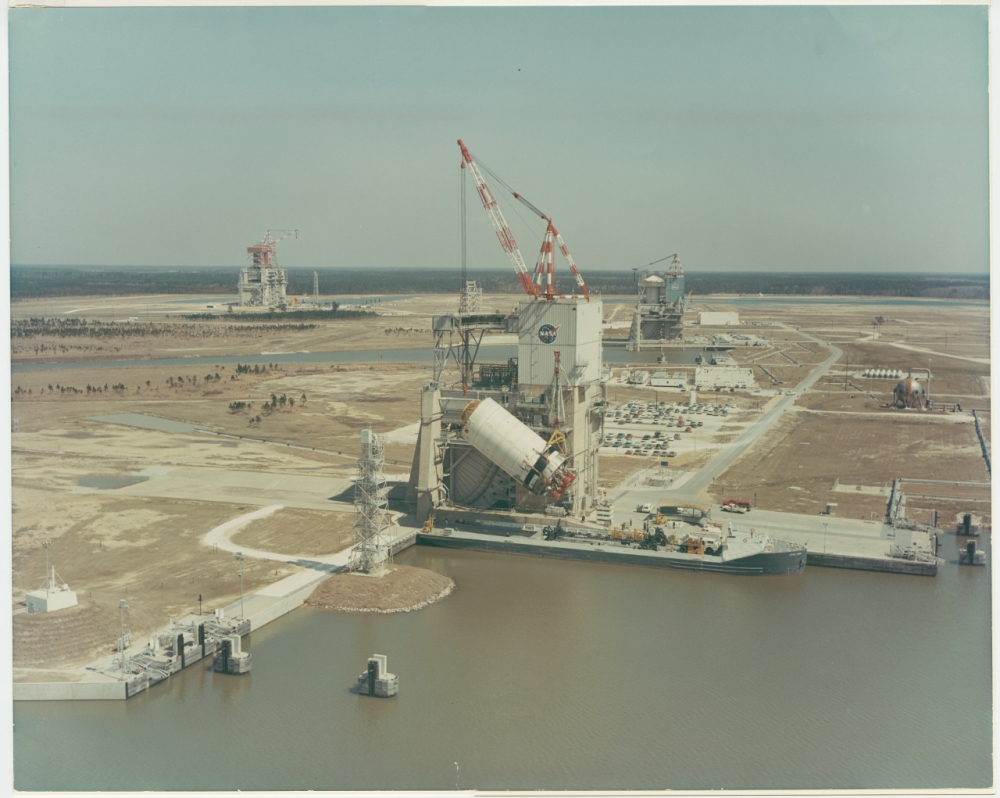
A Saturn V rocket is hoisted into a test stand at NASA’s John C. Stennis Space Center on the Mississippi Gulf Coast. Boosters manufactured in New Orleans were transported to the facility by barge. (THNOC, 1974.25.13.261)
According to NASA, Stennis test-fired each rocket stage—conducting a total of 42 trials—on one of three 200-foot-tall stands. After testing, barges brought the boosters out of the canal and across the Gulf of Mexico to be attached to the rest of the Saturn V rocket in Florida.
So, when Armstrong, followed by Edwin “Buzz” Aldrin, stepped onto the moon for the first time 50 years ago, people of the Gulf Coast could look up—or at their televisions—and see their work coming to fruition.
 A rocket is test-fired in southern Mississippi in 1969. (THNOC, 1974.25.13.262)
A rocket is test-fired in southern Mississippi in 1969. (THNOC, 1974.25.13.262)
Both of these sites still contribute to the space program. At Michoud in New Orleans, Boeing is manufacturing the core stage rocket for the Space Launch System, designed to bring astronauts to Mars in the coming years, as well as parts of the Orion vehicle, which will hold the crew. Meanwhile, Stennis has been testing boosters for the program on a new, 300-foot test stand.
Chances are that when humans return to the moon, or even venture to Mars, there will be Gulf Coast workers who helped put them there.
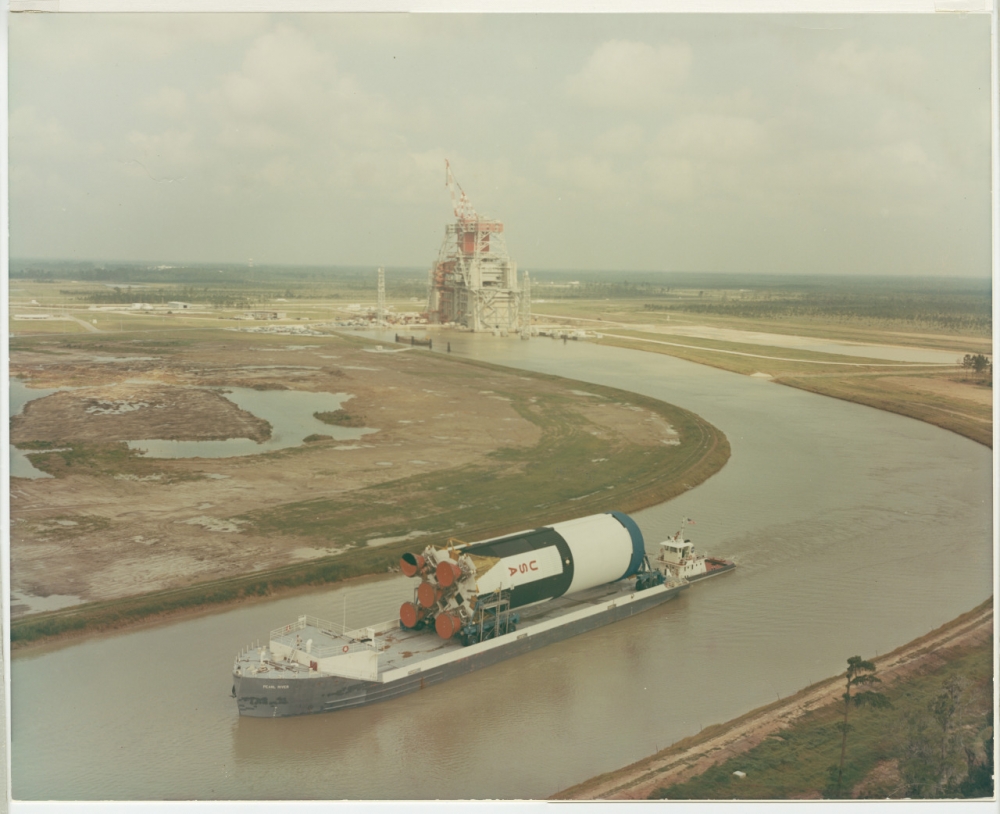 Cover image: A rocket booster manufactured in New Orleans makes its way by barge to a testing facility in Mississippi. (THNOC, 1974.25.13.260)
Cover image: A rocket booster manufactured in New Orleans makes its way by barge to a testing facility in Mississippi. (THNOC, 1974.25.13.260)

